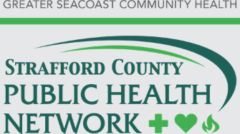

By John Doyle
jdoyle@fosters.com
SOMERSWORTH — By many measures, New Hampshire is one of the nation’s healthiest states. It is fifth in overall health, with high immunization coverage among children, a low percentage of children in poverty and high immunization among adolescents, according to www.americashealthrankings.org.
However, the state ranks 49th in treatment options available to substance abusers, according to the federal Substance Abuse and Mental Health Services Administration. And Strafford County is eighth of 10 New Hampshire counties in overall health, with a big factor being its lack of drug-abuse resource centers.
Strafford County, which includes 10 towns and the cities of Dover, Rochester and Somersworth, as well as the University of New Hampshire, ranked ahead of only Sullivan and Coös in overall health outcomes. Merrimack is No. 1, while Rockingham is No. 2, down from No. 1 in 2014.
Enter the Strafford County Public Health Advisory Council, a group of more than 165 local stakeholders, including medical, educational, governmental, law enforcement and social-service personnel. PHAC recently issued the Community Health Improvement Plan (CHIP) after 18 months of prioritizing the county’s most pressing health issues and crafting strategies to address those issues.
“It’s ambitious,” said Melissa Silvey, director of public health and continuum of care coordinator at Goodwin Community Health in Somersworth. “This region had never had (a community health plan) before, so we went big. We wanted this to really be about the needs of Strafford County.”
The CHIP focuses on five priorities: Substance abuse prevention, treatment and recovery; mental health; obesity and nutrition; emergency preparedness; and heart disease and stroke. Silvey said substance abuse and emergency preparedness are priorities mandated by the state, but it soon became apparent that substance abuse was the county’s most pressing health issue.
As stated in the CHIP, the top strategic approach to its goal of supporting substance-abuse prevention, treatment and recovery is to establish three drug-recovery centers targeted for Dover, Rochester and Durham. Although a heroin epidemic has ravaged the state with record drug-overdose deaths in 2015, the recovery centers would be available to those struggling with any addiction. That’s one reason Durham, home to UNH with its enrollment of 15,000 college students, was selected for one of the recovery centers.
“Durham hasn’t really seen (opioids) as an issue, but it’s not just for heroin addicts,” Silvey said. “It’s for people who struggle with all substances. Durham would cater to a much younger population.”
Durham was also selected to spread the recovery centers out geographically.
The need for recovery centers is great, Silvey said, because most who overdose on opioids will find themselves in an emergency room. While they will be treated, there is little an emergency department can do for a patient’s long-term recovery. “You can’t just get somebody sober and say good luck,” she said. “Recovery centers are for ongoing support for the duration of a lifetime.”
Silvey said she is looking for landlords to donate buildings for the centers. She said Rochester would need a 4,000-square-foot facility. “We don’t have 150 grand to buy one today,” she said. “We need a building donated, or rented to us at very low cost.”
Chronic disease
The burden of chronic disease in Strafford County is great. The CHIP cites a 31 percent adult obesity rate, 5.7 percent rate of adults diagnosed with and hospitalized for coronary heart disease, and the highest rate of stroke in the state, with 20.5 percent of hospital admissions attributed to stroke. Strafford ranks third of 10 counties for stroke mortality, with 204 deaths from 2009-2013.
According to the CHIP, one in four adults in the state is obese (defined as having a body-mass index at or above 30 percent). In Strafford County, 31 percent of adults are obese.
“There are factors that affect obesity — poor eating and a lack of physical activity go hand in hand,” said Liz Clark, community health improvement coordinator at Goodwin Community Health and Strafford County PHAC member.
One objective toward addressing obesity and improving nutrition in the county is the development of the HEAL Coalition, which stands for “healthy eating active living.” HEAL aims to improve access to healthy foods and physical activity.
“We want to increase access to physical activity opportunities that are free or low cost,” Clark said.
One focus group that contributed data for use in the CHIP indicated a lack of accessible healthy food was a barrier to eating healthy. A participant from New Durham said she has to drive to Rochester to get decent options for healthy food at grocery stores.
“We are working with some partners on potential plans to address that issue,” Clark said. “We’ve discussed mobile farmers’ markets, or even starting a farmers’ market up (in the New Durham/Farmington area) that would accept Supplemental Nutrition Assistance Program (SNAP) funds.”
The key is to overcome the economic challenges some of the smaller county communities face. “We’re already healthy in the scheme of things,” Silvey said. “We have these pockets of poverty that aren’t so healthy.”
This Fosters article can be found at: http://www.fosters.com/article/20160221/NEWS/160229952
